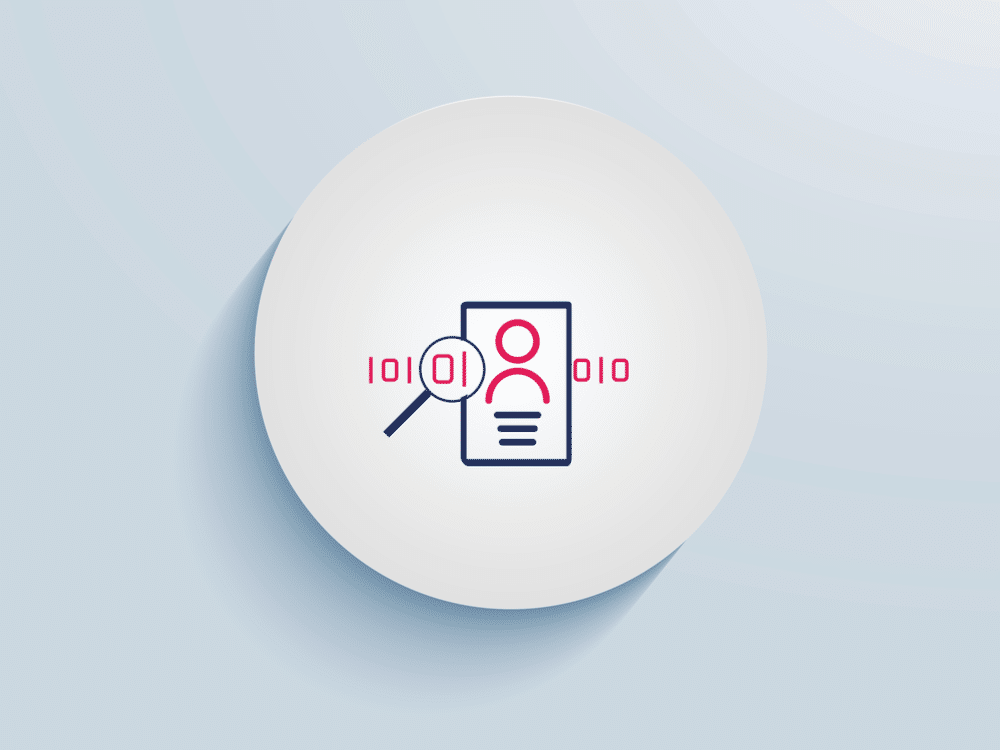Is there anything in this world more satisfying than a good, old-fashioned assumption? Someone asks you a question that you have no business answering, yet a response just tumbles out of your mouth. Most of us have probably made multiple assumptions today about benign things like the weather, which team will win a sporting event, or whether the mail has been delivered yet or not.
But assumptions are far less innocent in the business world. They can lead to irrelevant products, poorly priced services, ineffective advertisements, and unsatisfactory customer service. In fact, it’s possible to assume yourself right out of business.
Slightly tweaking the old saying, “The road to hell is paved with good assumptions.”
Customer Data: A Case Study
So what’s the alternative to assumptions? Cold, hard data. For example, let’s say your company sells sunglasses and you have a hunch that the majority of your customers live in Australia. Based on legitimate trends you’ve noticed, this assumption has some value. By evaluating the shipping information in your delivery system, however, you could deduce that 23% of your business’s paying customers live in Queensland, 10% live in regions of the country outside of Queensland, 33% live in New Zealand, and the remaining 34% live in other parts of the world.
See the difference? Your assumption got you moving in the right direction but was ultimately flawed. The majority of your customers don’t live in Australia. But it’s fascinating to learn that so many of your customers reside in Queensland. And 33% live in Australia as a whole, which is nothing to sniff at. Combined with the 33% that live in New Zealand, you’ve clearly got a region of the globe that’s passionate about your sunglasses.
The next steps would be to ascertain why Queensland residents are driving such a huge portion of your sales. Is there something about that area that makes your products more helpful to customers? Or is it some sort of cultural element?
To answer these bigger questions, you’ll need to dig deeper. You’ve already undertaken the first part of gathering customer data. You looked at the addresses of recipients to pinpoint their location on the map. While these quantitative discoveries are awesome, they only tell part of the story.
What you need is some qualitative research to round out your understanding. An ethnographic study could shed light on why customers in one part of the world are so passionate about your products. But if you lack the time and budget to have researchers travel to Queensland for such a study, you could go straight to the primary source for your qualitative data.
In other words, ask the customer.
Stacey Wonder is a big proponent of this method of data collection. As she explains:
All that research, all that speculation, all the analytics, all those avatars. Oh, the things we do to understand what our audiences want from us. Here’s a bright idea—why don’t we just ask them? Surveys may seem a little old-fashioned, but they remain one of the most effective and efficient tools in marketing, as they help you understand how to develop your marketing strategy and how to attract and convert new customers by getting to know your audience better.
Let’s say you send a survey to all customers in Australia and New Zealand who have purchased your sunglasses in the past 3 months. You ask how they first heard about your brand, what prompted them to make their purchase, and how they’ve felt about your product since receiving it.
Survey responses begin pouring in and you’re able to identify trends in the responses. Lo and behold, your research reveals that most of your customers in those countries love your sunglasses because of their durability. Your customers in Australia and New Zealand are particularly active outdoors, and many of them assert that your brand is the first they’ve tried that can handle the rigors of their lifestyle.
It took quantitative and qualitative research to come to this point. But now you understand a key product benefit that can be highlighted in your advertising in those countries.
And these discoveries are scalable. Perhaps you send out a follow-up email asking your customers in Australia and New Zealand to share their top 5 outdoor activities. Using the data you get back, you could identify other regions of the world where those activities are also popular. Then you’d be able to advertise the ruggedness of your sunglasses to additional audiences that will potentially be keen to hear it.
Six months later, your efforts have led to a 30% increase in global sales. The simplest assessment would be that your recent success has come because you had a hunch that most of your sunglasses customers were based in Australia. But that information was incomplete. You needed to invest time and energy into research before you had the actionable customer insights that enabled you to thrive.
What Is Customer Data and Insights?
Is there anything more fickle than human behavior? Think about how often your own mind changes. That sweater you were so proud of last winter? Now it seems tacky and you never wear it. The song you couldn’t stop humming last summer is now the bane of your existence and you get annoyed every time you hear it.
So it can be difficult to tap into your customers’ wants and needs and to decipher their motivations.
If you rely solely on the quantitative side of things, you’ll get data that fits beautifully into a spreadsheet. The age range of your ideal customer. The geographic areas most likely to return your products after a purchase. The socio-economic status of those who most often purchase your upsells.
These facts give you the “what.” And we should never discount the significance of these types of answers. But human nature is more about the “why.” And it’s those mercurial discoveries that can take a business from surviving to thriving.
So what is customer insight? It’s the nugget of truth that allows you to peel back the accumulated layers of established assumptions and find the convergence between “what” and “why.” Customer insights reveal why certain products are beloved while others flounder. What types of experiences create lifelong customers and which experiences lead them to ditch you like a bad prom date.
Empathy: The Secret Ingredient for Customer Experiences
As your quantitative and qualitative research uncovers more about your customers, you’ll begin to understand what they’re craving and why it matters to them. A cynic might look at this scenario and think that it enables business owners to do disingenuous things just to coax more purchases from their customers.
But the ultimate emotion you should feel from your customer insights is empathy. You started your business because you had an idea that you wanted to share with the world. You saw an existing need and developed a solution. That in and of itself is a noble pursuit.
And when you invest time, energy, and resources into understanding more about your customers, it shows that you care about them. Yes, it’s possible to simultaneously care about sales numbers and the customers behind them.
Guided by the customer data you’ve painstakingly gathered, you’ll be better able to deliver what they want. And the things that your customers most crave are distinct experiences with your brand. The kinds of positive interactions that can provide a little pick-me-up during a difficult day. The moments of delight that are so unexpected, your customers can’t help but share them with their friends.
Pratik Dholakiya quantifies just what brand experiences can do for your bottom line:
Customers value experiences. A recent report from PWC reveals that 86% of customers are willing to pay more for a brand that offers a great customer experience. Yet another study found that customer experience will overtake price and product as the key brand differentiator. No wonder delivering the best experience has become the topmost priority for ecommerce stores. A great customer experience (CX) can profoundly influence your audience’s purchase behavior, improve brand reputation, and give you an edge over your competitors. More than 50% of businesses worldwide have redirected their investments to CX, and more brands are appreciating the importance of customer experience as a customer retention strategy.
The two-edged sword of positive customer experiences is that they have the power to distinguish your brand and prompt sales more than perhaps any other element. But positive customer experiences are also becoming standard. So make no mistake, your competitors are focusing right now on providing the best customer experiences.
It’s not an arms race, as that term has a negative connotation, but more of a heart race. Who can deliver the most delightful and impactful moments for customers? Who can do the little things that communicate how much they care? Who can find the most innovative ways to meet customer needs?
We all want to provide such experiences. But without insightful data, you’re just throwing out random ideas in the hopes that one will stick.
If you really want to gain an edge on the competition and acquire some real estate in the hearts of your customers, your CX efforts must be as targeted as possible.
How to Gather Your Customer Insights
As mentioned earlier, surveys are a simple and effective way to collect customer insights. Whether you’re asking 2 key questions or seeking answers to a dozen queries, surveys allow you to seek direct input from the VIPs who keep your business, well, in business.
But you should be aware that there are potential limitations to the accuracy of surveys. First, surveys draw upon the memories of customers. And even the most brilliant individual might have a hard time remembering all the details you’re seeking.
For example, let’s say your survey asks questions about the checkout process on your website. If the customer completed a transaction in the last couple of days, they could likely share some specific insights. But if the checkout occurred further in the past, you could get vague responses that don’t do much for your understanding.
Go ahead and think of the most recent purchase you made from a website. Assuming it was within the last few days, you can probably picture the checkout process in your mind. But as an entrepreneur, you’re more likely to pay attention to those kinds of things than the average consumer.
Now try to think back to your third most recent online purchase. What was that checkout process like? Do you remember how intuitive the button placement was? Or the readability of the confirmation page? Probably not.
Another element of surveys is that they rely on accurate opinions that the customer might not have in ready supply. Joshua Lisec describes the issue:
Step one, ask your customers what they want. Step two, give it to them. Step three, let the profits roll in. If this summarizes your understanding of market research, you are dead wrong. Since the start of ecommerce way back in 1994, entrepreneurs and marketers have followed these three common-sense steps or some variation on them. In actuality, these steps lead you away from understanding customers’ true desires and profiting as a result. The reason for this, the fatal flaw of most feedback-driven marketing, is that customers don’t actually know what they want—and are horrifically bad at accurately reporting their desires.
How do you get around this issue of customers not knowing what they want? Lisec recommends asking customers what they don’t want, as this taps into emotions that are more consistent and reliable.
Go ahead and test this theory for yourself. Name your 2 least favorite bands in the world. That’s not a hard task, right? You might say Nickelback, Creed, Limp Bizkit, Imagine Dragons, Phish, or some other band entirely. Point is, when it comes to music, we know what we don’t like.
What about your 2 favorite bands? This is a tougher question. You might have an all-time favorite band that automatically rises to the top, but there are so many other bands to choose from that it’s hard to narrow the options down to only 2. It’s likely that your favorites might vary according to your mood or your stage of life.
But your least favorite is probably more static. Other bands come and go, but you’ll always detest [insert least favorite band here].
To be clear, the potential issues of not remembering things clearly or not knowing exactly what one wants don’t mean surveys aren’t an effective way to gather insights from your customers. You’ll just need to keep them in mind as you structure the questions and determine the audience for your surveys.
If you’re interested in a real-time method for gathering insights that reduce the fallibility of opinions, try remote usability testing. Rather than asking customers about their recollections and feelings, you get to watch your customers interact with your brand in a more native environment. For example, they might be using your website from the comfort of their own home, while software enables you to observe their actions.
Here are some of the advantages that remote usability testing offers when compared to focus groups and other in-person methods for collecting insights:
- You don’t need to be in the same location as the test participants
- Participants don’t feel like they’re being observed in a lab
- It’s inexpensive to run these tests
- They enable you to simultaneously test users from various regions of the world
While remote usability testing is an exciting innovation in the world of customer data, it’s not a perfect solution. Potential drawbacks include:
- Inability to observe body language and other nonverbal cues from participants
- Participants might struggle to install the necessary software
- Participants might also feel uneasy about installing the software
- Possibility of security issues with the data transmission
Your challenge as an entrepreneur is to review the available methods for gathering insights and determine which are ideal for your business. In addition to surveys and remote usability testing, your options include:
- Reviews: Anytime a customer leaves a review of your business, treat it as thoughtfully as you would a response received during a focus group. These are real opinions being shared in real-time. If you’re not currently tracking your customer reviews, you need to prioritize it immediately.
- Web analytics: All your websites and social accounts should provide analytics for where customers are going and what they’re doing. For example, you might learn that one of your landing pages gets a lot of user engagement until the bottom third of the page. Since this is apparently a departure point for users, you could consider adding a call to action (CTA) button prior to this point and then reassess the content to make it more compelling.
- A/B testing: While remote usability testing involves an established connection between you and the participant, you can glean similar data simply by testing 2 different options on your web properties and seeing which gets the better response. When it comes to crucial elements such as headlines, images, and calls to action, you should always conduct tests to identify the top performers.
- Customer support: One final avenue for customer insights are tickets submitted to your customer support team. They’ll help you identify trends that reveal which elements of your business are confusing or frustrating your customers.
If you’d like to get additional strategies for making your business more customer-focused, head over to our library of free business courses. You’ll learn crucial skills, such as how to build an online community, how to find relevant products that build customer loyalty, and how to write copy that connects with your audience.




















